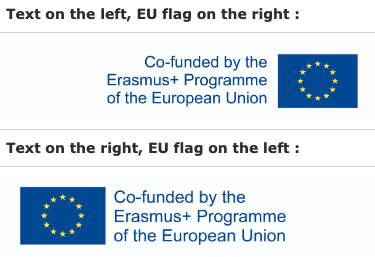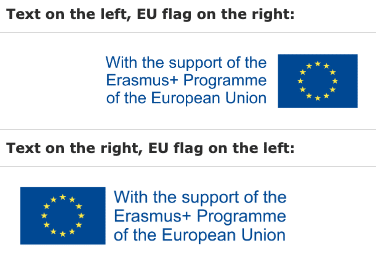Introduction
Erasmus+ is a program funded by the European Union (EU) that provides opportunities for education, training, and youth development. As part of the Erasmus+ Visual Identity requirements, beneficiaries need to follow specific steps. This article provides an overview of the visual identity and logos for Erasmus+ to help ensure that beneficiaries and external organisations produce promotional materials that comply with the guidelines.
EU Flag and Acknowledgement of Support
The European Union emblem (flag) must be used, and the name of the European Union displayed in full. Moreover, for projects funded by the Erasmus+ programme alone, the preferred option is to write “Co-funded by” or “With the support of,” followed by “the Erasmus+ programme of the European Union” next to the EU flag. Here’s an example:

For projects funded by Erasmus+ ERASMUS MUNDUS and JEAN MONNET ACTIVITIES, the same format is recommended with the mention: With the support of + [programme name] of the European Union. An example follows:

Guidelines on Studies and Publications
For publications and studies produced by external organisations with support from the European Commission, a disclaimer must be added to the inner pages stating that: “The European Commission’s support for the production of this publication does not constitute an endorsement of the contents, which reflect the views only of the authors, and the Commission cannot be held responsible for any use which may be made of the information contained therein.“
You can find the related resources by visiting the EACEA website. You can also download the Erasmus+ Graphic Design User Guide and logo from the DG EAC website.
Conclusion
Adhering to the Erasmus+ Visual Identity guidelines is essential for beneficiaries of EU funding. It ensures consistency and proper use of the EU emblem while acknowledging the support received from the European Union.
Read more:
TOSCA: Training and Support for Organisations in the European Solidarity Corps
Guidelines for Educators: Promoting Digital Literacy in the Classroom




